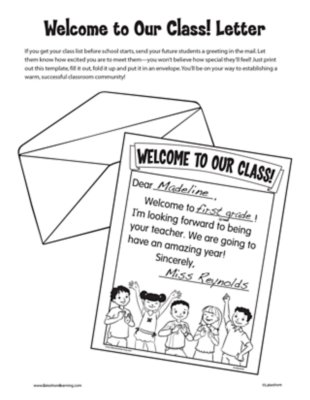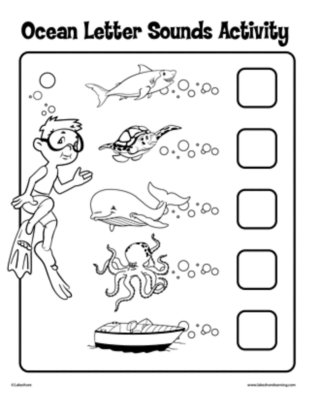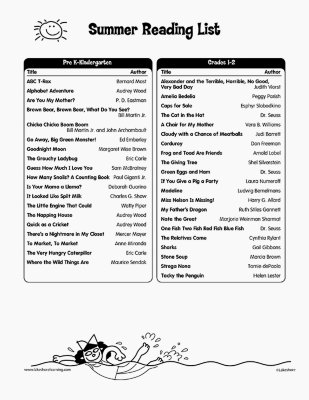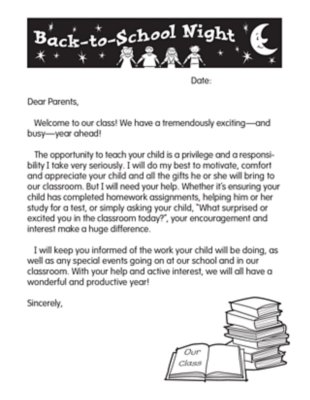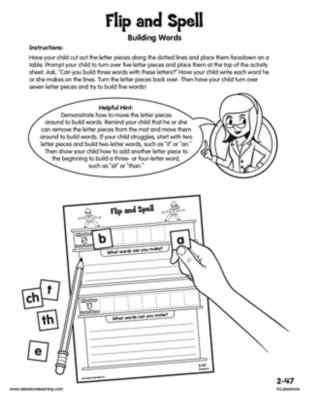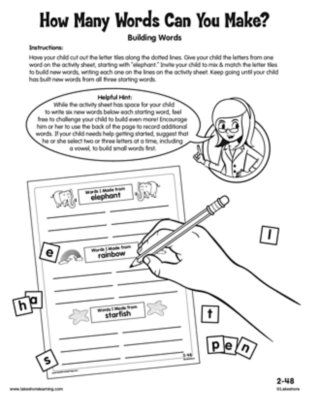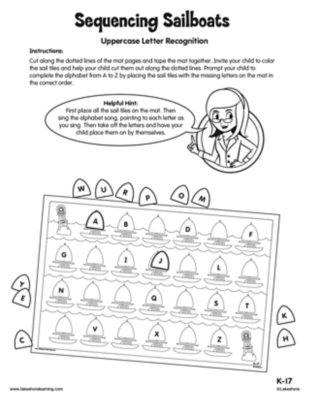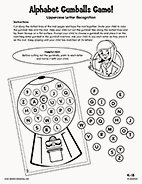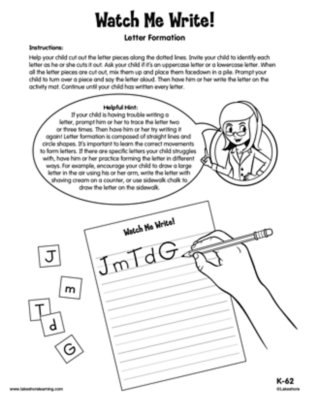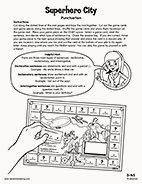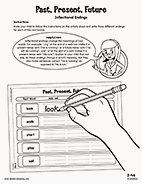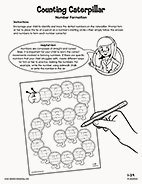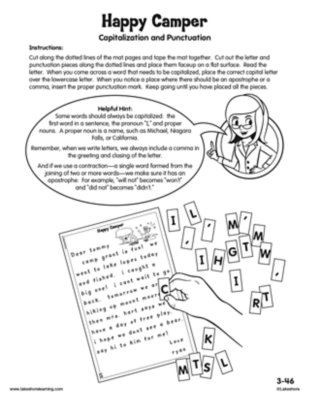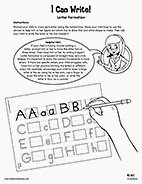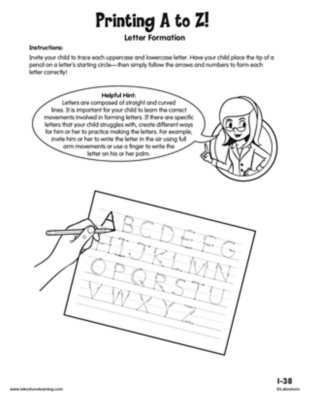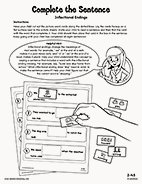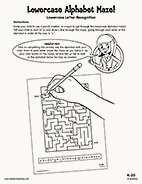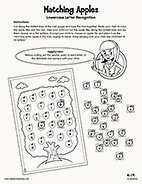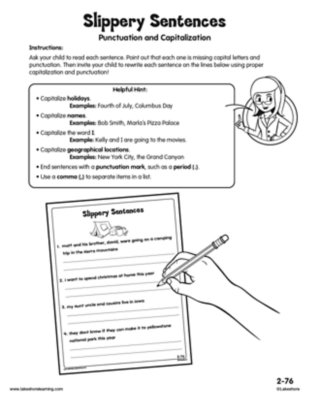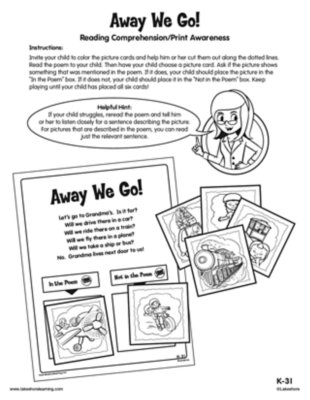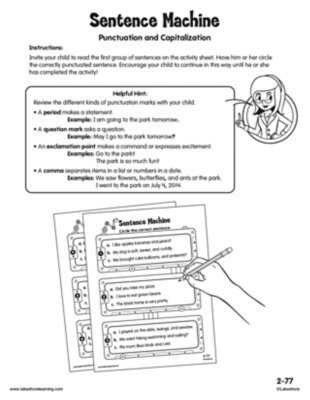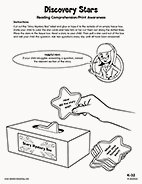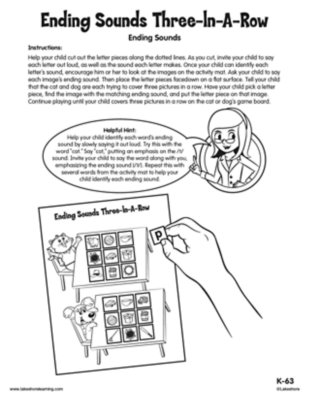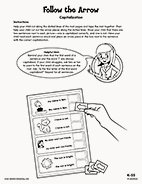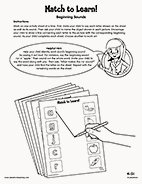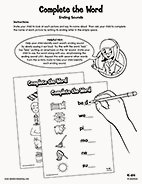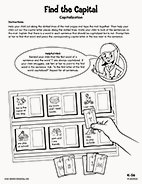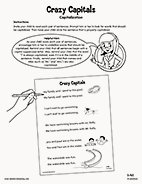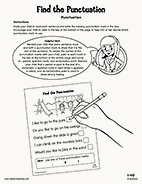Narrow by Grade
Grade
31 results for "letters"
When entering fourth grade, your child should be able to recognize common features of nonfiction text, such as diagrams, graphs and photo captions. Your child should also be able to use those features to locate information.
View worksheetWhen entering second grade, your child should be able to build and spell simple words by blending sounds together. For example, when given the letters “a,” “e,” “c,” “b,” “d,” “g” and “s,” your child should be able to use the letters to build and read at least three words.
View worksheetWhen entering second grade, your child should be able to build and spell simple words by blending sounds together. For example, when given the letters “a,” “e,” “c,” “b,” “d,” “g” and “s,” your child should be able to use the letters to build and read at least three words.
View worksheetWhen entering kindergarten, your child should be able to recognize and name some uppercase letters, especially those in your child’s name.
View worksheetWhen entering kindergarten, your child should be able to recognize and name some uppercase letters, especially those in your child’s name.
View worksheetDuring kindergarten, your child will learn to print uppercase and lowercase letters.
View worksheetWhen entering third grade, your child should remember to capitalize holidays, product names and geographic names. Your child should also use commas in the greetings and closings of letters and use apostrophes in contractions and possessives, such as “Jeff’s bike.”
View worksheetWhen entering second grade, your child should be able to read words with inflectional endings and use them correctly in sentences. Inflectional endings are letters that are added to words, such as “-ing,” “-es,” or “-ed.” For example, your child should be able to read the words “wishing,” “wishes” and “wished” and use them correctly in sentences.
View worksheetWhen entering first grade, your child should be able to print many uppercase and lowercase letters and write numbers 0 through 20.
View worksheetWhen entering third grade, your child should remember to capitalize holidays, product names and geographic names. Your child should also use commas in the greetings and closings of letters and use apostrophes in contractions and possessives, such as “Jeff’s bike.”
View worksheetDuring kindergarten, your child will learn to print uppercase and lowercase letters.
View worksheetWhen entering first grade, your child should be able to print many uppercase and lowercase letters and write numbers 0 through 20.
View worksheetWhen entering second grade, your child should be able to read words with inflectional endings and use them correctly in sentences. Inflectional endings are letters that are added to words, such as “-ing,” “-es,” or “-ed.” For example, your child should be able to read the words “wishing,” “wishes” and “wished” and use them correctly in sentences.
View worksheetWhen entering kindergarten, your child should be able to recognize and name some lowercase letters, especially those in your child’s name.
View worksheetWhen entering kindergarten, your child should be able to recognize and name some lowercase letters, especially those in your child’s name.
View worksheetDuring second grade, your child will learn to capitalize holidays, product names and geographic names. Your child will also learn to use commas in the greetings and closings of letters and use apostrophes in contractions and possessives, such as “Jeff’s bike.”
View worksheetWhen entering kindergarten, your child should be able to listen to a story and ask and answer questions about key details, such as identifying characters and events and retelling the story in their own words. Your child should also understand the basic features of print, such as differentiating letters from words, recognizing that words have spaces between them and distinguishing the roles of authors and illustrators.
View worksheetDuring second grade, your child will learn to capitalize holidays, product names and geographic names. Your child will also learn to use commas in the greetings and closings of letters and use apostrophes in contractions and possessives, such as “Jeff’s bike.”
View worksheetWhen entering kindergarten, your child should be able to listen to a story and ask and answer questions about key details, such as identifying characters and events and retelling the story in their own words. Your child should also understand the basic features of print, such as differentiating letters from words, recognizing that words have spaces between them and distinguishing the roles of authors and illustrators.
View worksheetDuring kindergarten, your child will learn to identify the ending sounds in simple words and identify the letter that makes them, such as identifying the “n” sound in “pen.”
View worksheetDuring kindergarten, your child will learn that sentences begin with a capital letter and that the word “I” is also capitalized.
View worksheetDuring kindergarten, your child will learn to identify beginning sounds in words and name the letter that makes them, such as identifying the “b” sound in “bat.”
View worksheetDuring kindergarten, your child will learn to identify beginning sounds in words and name the letter that makes them, such as identifying the “b” sound in “bat.”
View worksheetDuring kindergarten, your child will learn to identify the ending sounds in simple words and identify the letter that makes them, such as identifying the “n” sound in “pen.”
View worksheetDuring kindergarten, your child will learn that sentences begin with a capital letter and that the word “I” is also capitalized.
View worksheetWhen entering first grade, your child should understand that sentences begin with a capital letter and that the word “I” is also capitalized. Your child should also be able to recognize and name the punctuation marks at the end of sentences, including periods, question marks and exclamation points.
View worksheetWhen entering first grade, your child should understand that sentences begin with a capital letter and that the word “I” is also capitalized. Your child should also be able to recognize and name the punctuation marks at the end of sentences, including periods, question marks and exclamation points.
View worksheet
